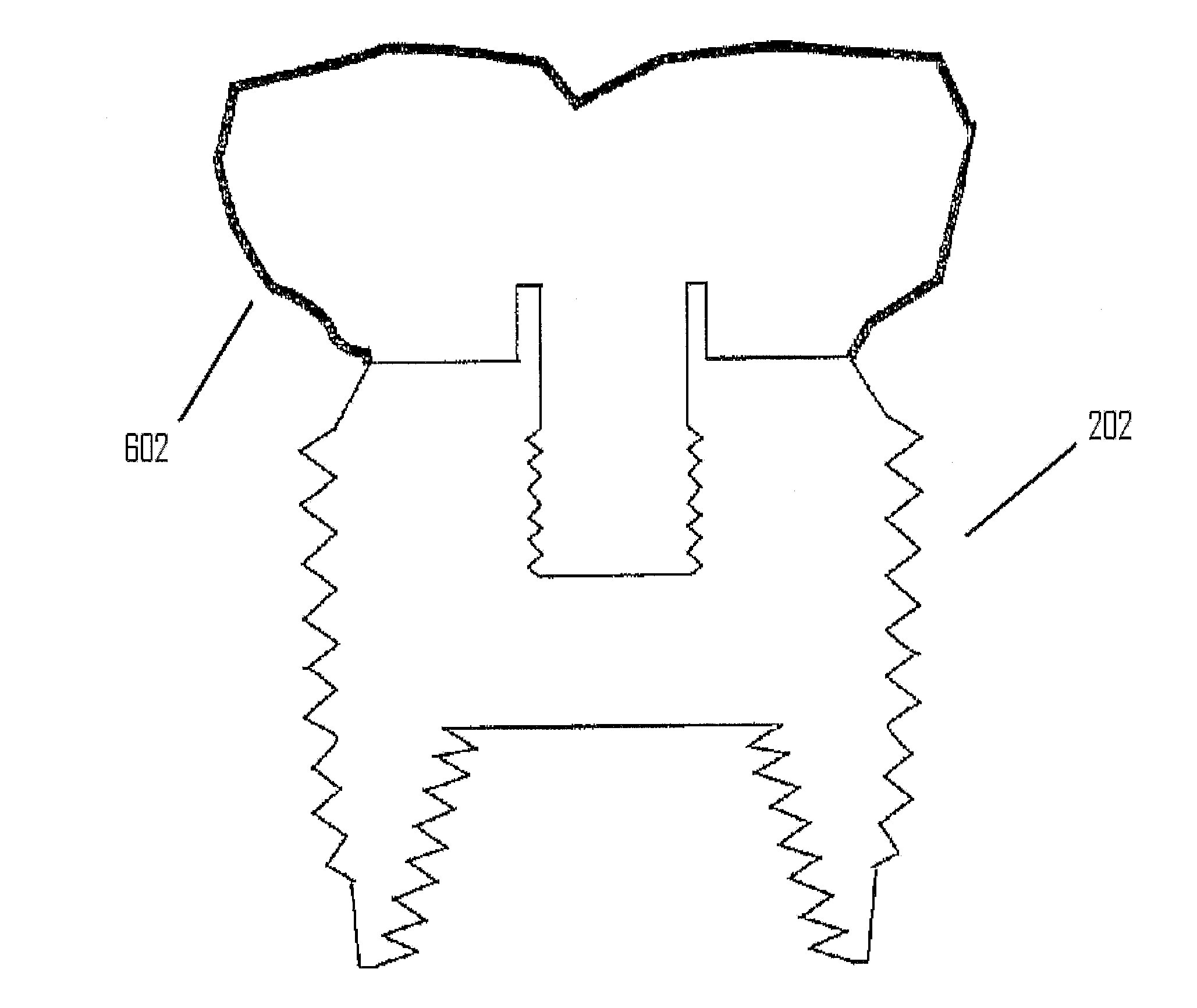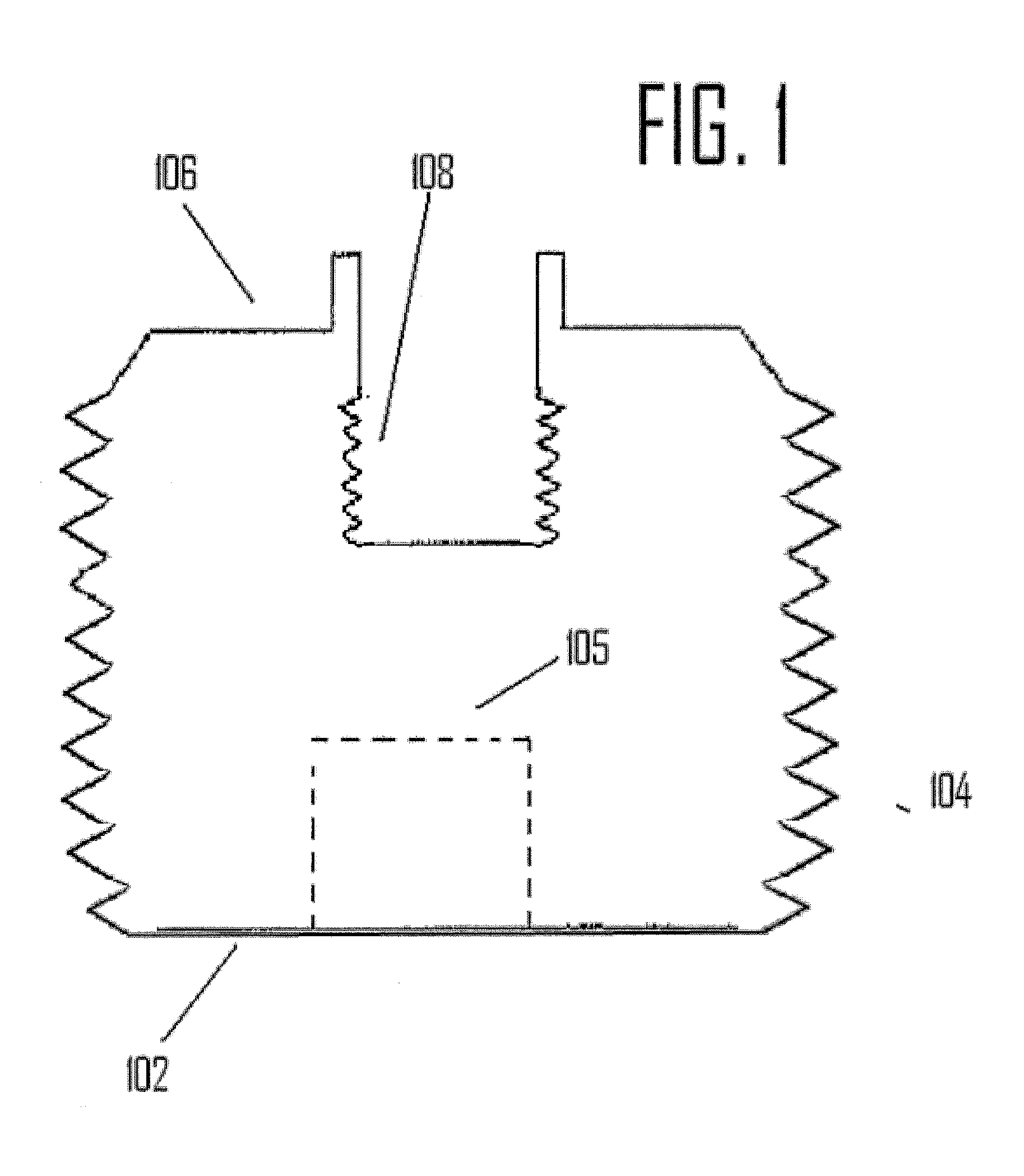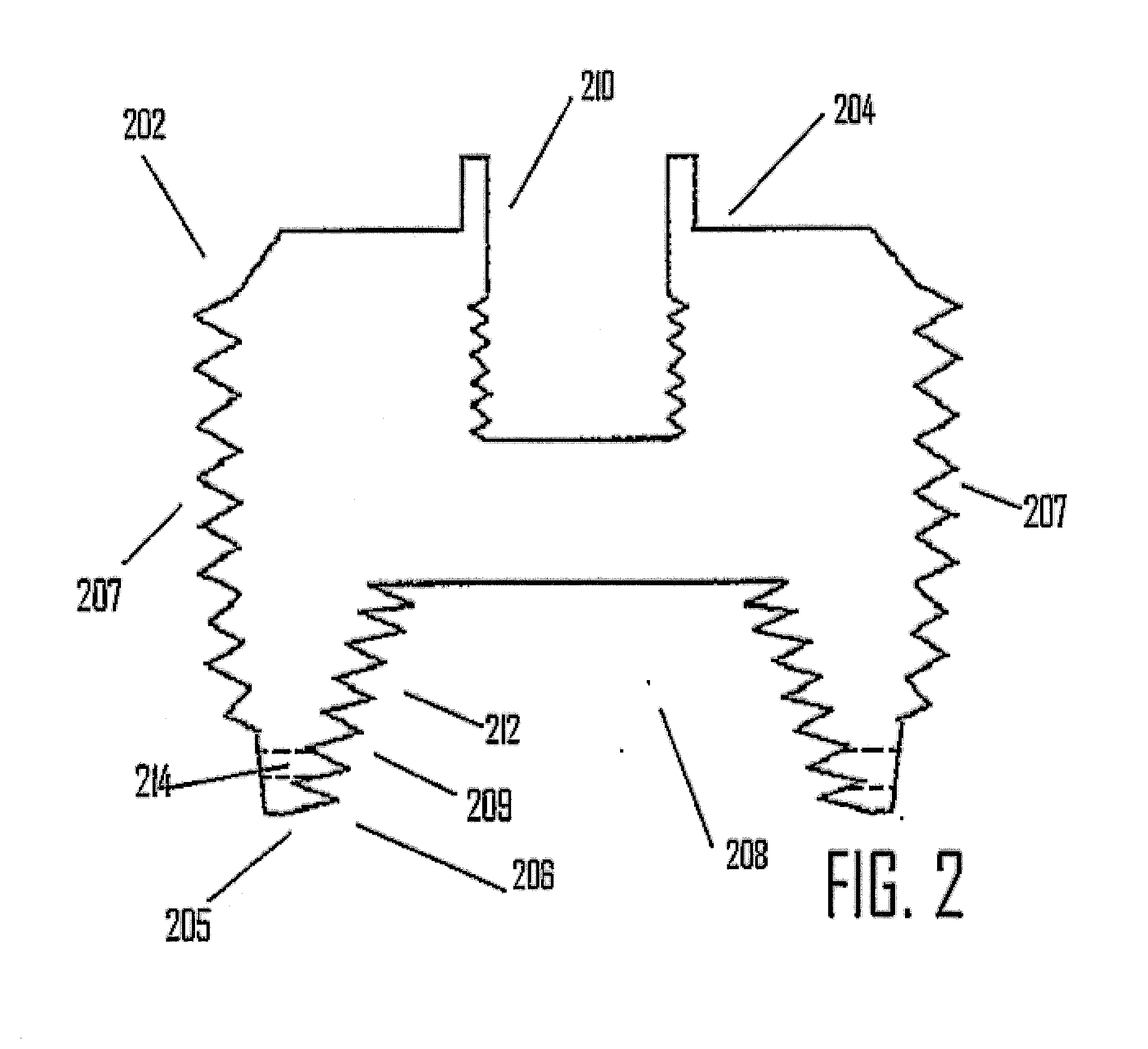Apical cutting thread dental implant
a technology of dental implants and cutting threads, applied in dentistry, dental surgery, medical science, etc., can solve the problems of difficult evacuation of cavities, severe and lasting damage to nerves, tissue and bone, and still possible, so as to minimize the risk of complications, enhance stability, and eliminate drawbacks
- Summary
- Abstract
- Description
- Claims
- Application Information
AI Technical Summary
Benefits of technology
Problems solved by technology
Method used
Image
Examples
Embodiment Construction
[0022]As seen in FIG. 1, a traditional dental implant as provided in the prior art is illustrated. The prior art dental implant has a roughly cylindrical shape designed to fit within a corresponding hole drilled into a portion of a patient's jawbone. A traditional implant possess an apical end 102 that is substantially flat and is designed to maximize contact between the apical end 102 of the implant and the bottom portion of the pre-drilled cavity in the jawbone. In order to assist in the stability of the prior art implant, exterior threads 104 are provided on the exterior of the implant so as to cut and thread their way into the sides of the pre-drilled cavity. Some prior implants contain an interior cavity 105 in which bone chips created by the threading operation may be stored. Furthermore, the implant possesses a coronal end 106 which is adapted to secure an abutment or crown attachment by means of a threaded recess 108 or other securing mechanism.
[0023]As seen in FIG. 2, an em...
PUM
 Login to View More
Login to View More Abstract
Description
Claims
Application Information
 Login to View More
Login to View More - R&D
- Intellectual Property
- Life Sciences
- Materials
- Tech Scout
- Unparalleled Data Quality
- Higher Quality Content
- 60% Fewer Hallucinations
Browse by: Latest US Patents, China's latest patents, Technical Efficacy Thesaurus, Application Domain, Technology Topic, Popular Technical Reports.
© 2025 PatSnap. All rights reserved.Legal|Privacy policy|Modern Slavery Act Transparency Statement|Sitemap|About US| Contact US: help@patsnap.com



